Was' Up with Eelgrass
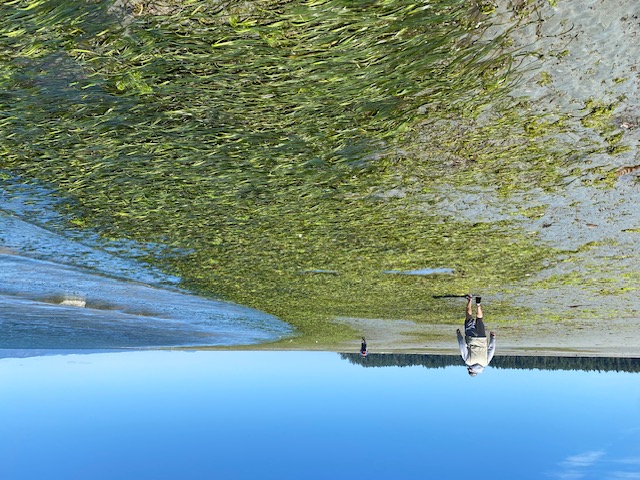
Enthusiastic volunteers were already out mapping eelgrass beds just one day after our training by Nikki Wright of Seachange Marine Conservation Society. We have mapped the inner perimeter of the eelgrass beds at Parksville Beach, Surfside, San Pariel and Rathtrevor-Craig Bay. The beds appear to be in the same locations as they were when they were mapped in 2008 but we have yet to map the outer perimeter which we will do by boat.
So was' up with eelgrass? Eelgrass beds, or meadows as they are sometimes called, are highways for young salmon. For salmon, a large break in an eelgrass bed is like a washout on a highway for us. All species of crabs and some species of sea stars use eelgrass beds as nurseries. Forage fish (an important food source for adult salmon) use eelgrass beds as do rockfish. Eelgrass stabilizes shorelines, gives us oxygen, cleans the water, and sequesters carbon. In fact, the United Nations has declared eelgrass as a weapon against Climate Change.
There are two species of eelgrass in the Parksville area:
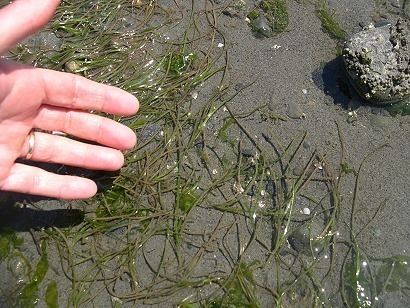
Dwarf eelgrass (Zostera japonica) is short and thin like vermicelli. It grows on the flat sandy areas that are exposed at low tide. It's an introduced species but does not compete with our native eelgrass. It's an annual plant and reproduces by seed.
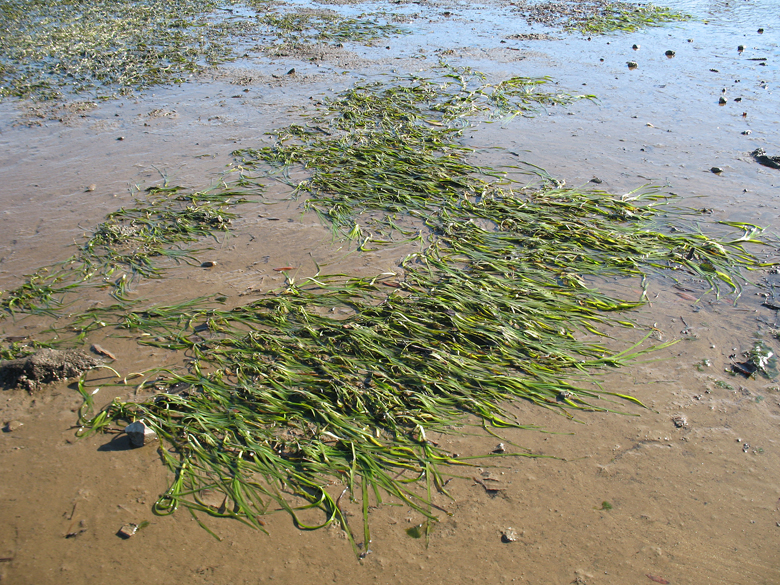
Native eelgrass (Zostera marina) is longer and wider like fetuccuini. It doesn't like to be as exposed as dwarf eelgrass so is found out near the water's edge during extreme low tides. It also grows in the subtidal zone up to 10 m in depth, depending on water clarity. It's a prerennial plant and reproduces through spreading rhizomes.
Dragging boat anchors and chains uproot the plants and have had huge impacts on eelgrass beds in the Salish Sea, especially in areas where boats and ships are moored. Learn about inexpensive eelgrass-friendly mooring lines here. Eelgrass prefers sandy or muddy bottoms and is sparse in gravelly and rocky substrate. Shoreline armourment such as seawalls and riprap cause deflected waves to scour and sweep away sand, exposing the gravel and rock that was sitting below. This can degrade eelgrass beds so using Green Shores methods in shoreline protection is important for conserving eelgrass.
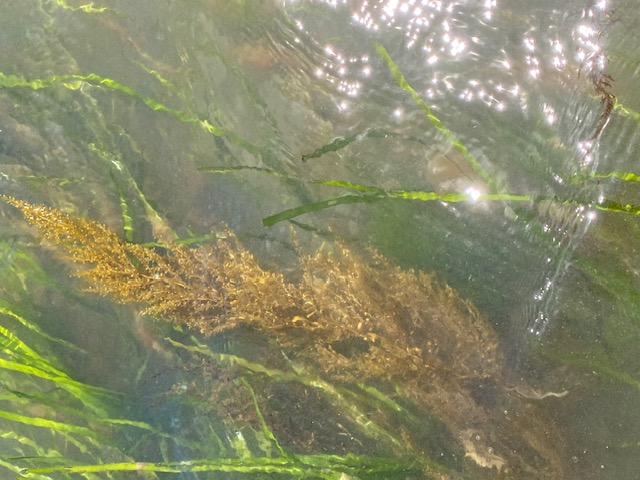
And now an invader has entered our eelgrass beds: Sargassum (right-hand photo). Sargassum has been in the news lately for piling up on the shores in Florida and the Caribbean. There are many different species inhabiting the oceans however, none of them are native to our coast.
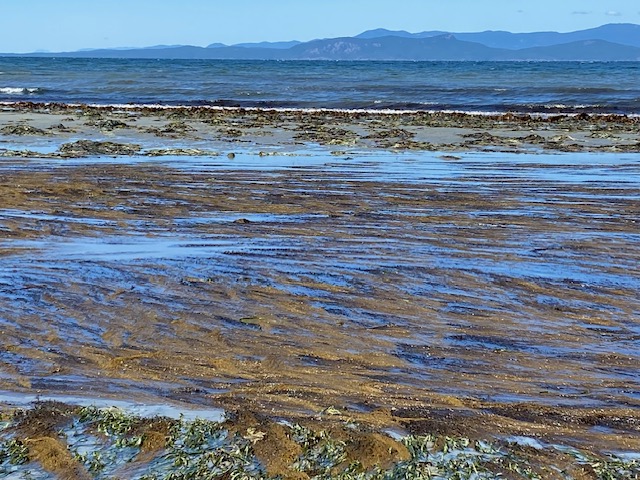
The species found here roots itself to rocks and shells and shades out native species like sea lettuce and eelgrass, as seen in the left-hand photo taken recently at Rathtrevor. Eelgrass provides a complex habitat whereas the habitat provided by Sargassum is simple and lacks some of the features required by our marine species. Pulling up Sargassum only causes it to spread so the rock or shell it is rooted on needs to be removed along with the intact plant. This again emphasizes the need to prevent the erosion of sand from our beaches: less rock for Sargassum to root on.
An interesting tidbit is that eelgrass and sand dollars do not live together. Sand dollars vibrate when they burrow and forage for food, changing the nature of the sand which prevents eelgrass from establishing. A bare patch in an eelgrass bed could be a sand dollar bed.
That's it for now. We'll keep you updated on our findings. Many thanks to volunteers: Jamie Pollard, Manon Fontaine, Liz Bredberg, Bruce Murray, Carl Rathburn, Pat Ashton, Dick Dobler, Austin Peterson, and Barb Riordan.